Heterozygous mutation in BRCA2 induces accelerated age-dependent decline in sperm quality with male subfertility in rats
- PMID: 39747609
- PMCID: PMC11696240
- DOI: 10.1038/s41598-024-84184-8
Heterozygous mutation in BRCA2 induces accelerated age-dependent decline in sperm quality with male subfertility in rats
Abstract
Tumor suppressor BRCA2 executes homologous recombination to repair DNA double-strand breaks in collaboration with RAD51, involving exon 11 and 27. Exon 11 constitutes a region where pathogenic variants (PVs) accumulate, and mutations in this region are known to contribute to carcinogenesis. However, the impact of the heterozygous PVs of BRCA2 exon 11 on the life quality beyond cancer risk, including male fertility, remains unclear. Here, we established a rat model with a frameshift on the seventh BRC repeat in Brca2 exon 11 (Brca2+/p.T1942fs), which is homologous to human BRCA2+/p.T1974fs, using CRISPR/Cas9 system. Our analyses revealed that the heterozygous rats with the PV in the BRCA2 exon 11 showed increased DNA double-strand breaks and apoptosis in spermatogonia and spermatocytes, accelerated testicular germ cell loss, and deterioration in sperm quality according with aging, ultimately resulting in early male reproductive dysfunction. Of note, these alterations in testes and sperm, including DNA fragmentation in spermatozoa, were observed from completion of sexual maturation. The present findings suggest that it is crucial to consider not only cancer risk but also potential declines in reproductive capacity in men carrying BRCA2 exon 11 PVs. Further investigation is warranted to determine whether similar traits appear in humans.
Keywords: Aging; BRCA2 exon 11; Heterozygote; Male subfertility; Pathogenic variant; Spermatogenesis.
© 2024. The Author(s).
Conflict of interest statement
Declarations. Competing interests: The authors declare no competing interests.
Figures
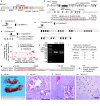
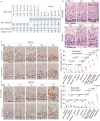
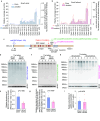
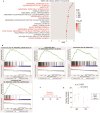
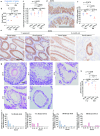
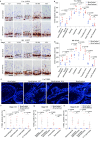

Similar articles
-
Deletion of Brca2 exon 27 causes hypersensitivity to DNA crosslinks, chromosomal instability, and reduced life span in mice.Genes Chromosomes Cancer. 2003 Apr;36(4):317-31. doi: 10.1002/gcc.10148. Genes Chromosomes Cancer. 2003. PMID: 12619154
-
Identifying a BRCA2 c.5722_5723del mutation in a Han-Chinese family with breast cancer.Biosci Rep. 2019 Apr 30;39(4):BSR20182471. doi: 10.1042/BSR20182471. Print 2019 Apr 30. Biosci Rep. 2019. PMID: 30940775 Free PMC article.
-
Deletion of BRCA2 exon 27 causes defects in response to both stalled and collapsed replication forks.Mutat Res. 2014 Aug-Sep;766-767:66-72. doi: 10.1016/j.mrfmmm.2014.06.003. Epub 2014 Jun 22. Mutat Res. 2014. PMID: 25847274
-
Single and Double Strand Sperm DNA Damage: Different Reproductive Effects on Male Fertility.Genes (Basel). 2019 Jan 31;10(2):105. doi: 10.3390/genes10020105. Genes (Basel). 2019. PMID: 30708937 Free PMC article. Review.
-
Guardians of the Genome: BRCA2 and Its Partners.Genes (Basel). 2021 Aug 10;12(8):1229. doi: 10.3390/genes12081229. Genes (Basel). 2021. PMID: 34440403 Free PMC article. Review.
Cited by
-
Iron-catalyzed oxidative stress compromises cancer promotional effect of BRCA2 haploinsufficiency through mitochondria-targeted ferroptosis.Redox Biol. 2025 Jun 24;85:103739. doi: 10.1016/j.redox.2025.103739. Online ahead of print. Redox Biol. 2025. PMID: 40609478 Free PMC article.
References
-
- McAllister, K. A. et al. Characterization of the rat and mouse homologues of the BRCA2 breast cancer susceptibility gene. Cancer Res.57, 3121–3125 (1997). - PubMed
Publication types
MeSH terms
Substances
Grants and funding
LinkOut - more resources
Full Text Sources
Medical
Research Materials
Miscellaneous

